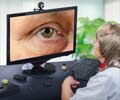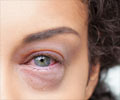Patients who have difficulty with peripheral vision or seeing in low light can now have enhanced enhance mobility and function using augmented reality glasses.

TOP INSIGHT
Modern wearable low vision technologies utilizing virtual reality are insufficient and can be challenging to use or require patients to undergo extensive training,
Read More..
"Current wearable low vision technologies using virtual reality are limited and can be difficult to use or require patients to undergo extensive training," said Mark Humayun, MD, PhD, director of the USC Dr. Allen and Charlotte Ginsburg Institute for Biomedical Therapeutics, co-director of the USC Roski Eye Institute and University Professor of Ophthalmology at the Keck School.
"Using a different approach -- employing assistive technology to enhance, not replace, natural senses -- our team adapted AR glasses that project bright colors onto patients' retinas, corresponding to nearby obstacles," Humayun said.
Patients with retinitis pigmentosa wore adapted AR glasses as they navigated through an obstacle course based on a U.S. Food and Drug Administration-validated functional test. Using video of each test, researchers recorded the number of times patients collided with obstacles, as well as the time is taken to complete the course. Patients averaged 50% fewer collisions with the adapted AR glasses.
Patients also were asked to grasp a wooden peg against a black background -- located behind four other wooden pegs -- without touching the front items. Patients demonstrated a 70% increase in grasp performance with the AR glasses.
"Through the use of AR, we aim to improve the quality of life for low vision patients by increasing their confidence in performing basic tasks, ultimately allowing them to live more independent lives," Angelopoulos says.
The AR system overlays objects within a 6-foot wireframe with four bright, distinct colors. In doing so, the glasses provide visual color cues that help people with constricted peripheral vision interpret complex environments, such as avoiding obstacles in dimly lit environments. To accomplish this, researchers used a process called simultaneous location and mapping, allowing the AR glasses to render the 3D structure of a room in real-time fully. The glasses then translated this information into a semitransparent colored visual overlay, which highlighted potential obstacles with bright colors to help patients with spatial understanding and depth perception. This technology can work on commercially available devices.
According to Humayun, while high cost and technical issues remain, this type of assistive technology could eventually become more practical for everyday use in the near future.
Source-Eurekalert
 MEDINDIA
MEDINDIA




 Email
Email





